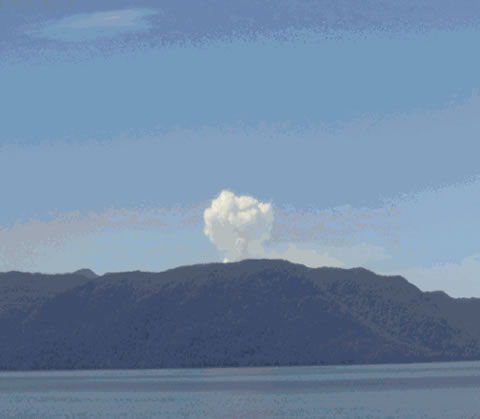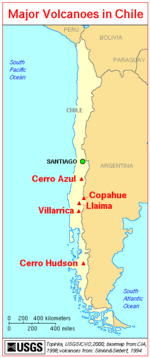
© n/aHudson volcano erupts in Chile
Chile - The National Service of Geology and Mining (SERNAGEOMIN) - Volcano Observatory of the Southern Andes (OVDAS), announced that from the early hours of last night there has been increased seismic activity related to the Hudson volcano. At 19:08 local time, an earthquake Volcano-tectonic (VT), magnitude (ML) equal to 4.6 located 7 km to the NW edge of the caldera, at a depth of 19 km, which was followed by the occurrence of a seismic swarm starting at 21:49 hrs, includes more than 100 seismic events recorded until the time of this report, whose depths range from 15 to 25 km.
It notes that 15 events recorded magnitudes (ML) greater than 3.0 and three (3) of these magnitudes (ML) greater than 4.0, all characterized by having more to do with broken rock (VT) at 00: local 20 hours today, Wednesday, October 26, an earthquake associated with fluid movement and characterized by very low frequency (long period - VLP), located in the same area at a depth of 15 km, with a magnitude (ML) equal to 4.3. The seismic swarm continues at the time of issuance of this report with less intensity. The preceding activity indicates that the volcanic system has experienced changes in their dynamics, possibly associated magmatic activity at depth, which in the future the system can lead to imbalance. (Source: Sernageomin -translated)
Pre-eruption: The Chilean authorities decided to raise the alert level to red and preventive evacuations in an area of 40 kilometers around Mount Hudson. The column emission from the eruption reached 1 km in height. The information was confirmed this afternoon from Vice President Rodrigo Hinzpeter Onemi, from where he said he "cannot rule out an eruption," so it was decided to evacuate people living in that radius." An over-flight of the area showed a column of smoke and gases out of the cone of the Hudson. In addition, there were some signs of an avalanche in the vicinity. (Source: Diarioandino)
Hudson's explosive history: "Large eruptions around 4750 BCE and 1890 BCE are believed to have been of Volcanic Explosivity Index VEI 6; these are probably responsible for the large caldera. The 4750 BCE eruption may have wiped out many if not all groups of early man living in central Patagonia at that time, based on evidence from the Los Toldos archaeological site. Before 1970, little was known about the mountain. Minor eruptive activity began in 1970 and melted parts of the glacier, raising river water levels and leading to the identification of the caldera. In August-September 1971, a moderate eruption (VEI 3) located in the northwest area of the caldera sent ash into the air and caused lahars from the melting of a large portion of the glacier. The lahars killed five people; many more were evacuated. It's last eruption in August to October 1991 was a large plinian eruption with a VEI of 5, that ejected 4.3 km3 bulk volume (2.7 cubic km of dense rock equivalent material). Parts of the glacier melted and ran down the mountain as mud flows. Due to the remoteness of the area, no humans were killed but hundreds of people were evacuated from the vicinity. Ash fell on Chile and Argentina as well as in the South Atlantic Ocean and on the Falkland Islands. In addition to the ash, a large amount of sulfur dioxide gas and aerosols were ejected in the eruption. These contributed to those already in the atmosphere from the even larger Mount Pinatubo eruption earlier in the year and helped cause a worldwide cooling effect over the following years. Ozone was also depleted, with the Antarctic ozone hole growing to its largest levels ever recorded in 1992 and 1993." (Source: Wikipedia)

© USGSMajor volcanoes in Chile
Reader Comments
to our Newsletter